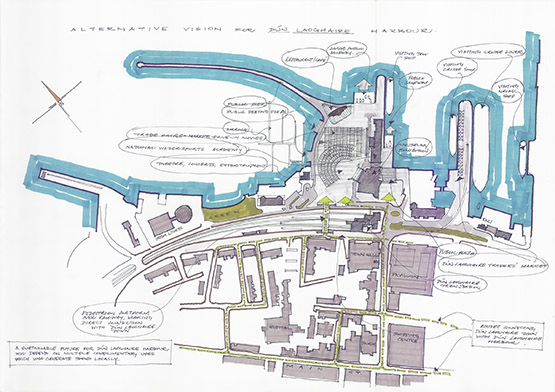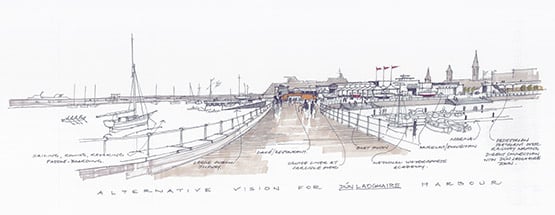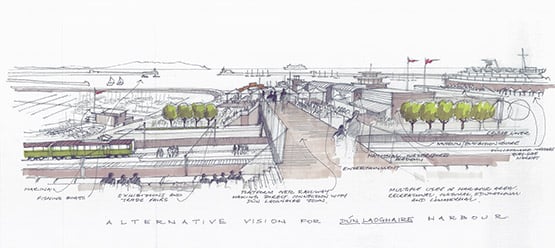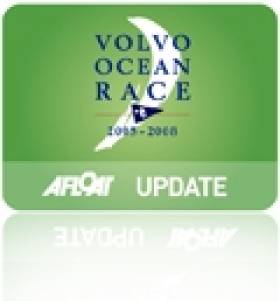Displaying items by tag: Watersports
Watersports Centre for Galway City Reaches Tender Stage for Design
A new watersports adventure centre for Galway city has reached tender stage for design of the facility.
An architect-led design team for the project, which will be located in the old Terryland waterworks building on the Dyke road in Galway, has been appointed.
The former waterworks plant, now lying idle, was developed in 1867 near the river Corrib, and is owned by the local authority.
It has been earmarked for the proposed new Corrib Sports and Adventure Centre for Water Sports Activities.
The waterworks plant is on Galway’s list of protected structures, so any alterations will have to be in keeping with the architectural and heritage protections afforded to the existing building.
Galway City Council’s tourism section applied for funding from Fáilte Ireland to examine the potential of converting part of the old plant into a watersports amenity.
Specifications in the tender include provision of showers, toilets and changing facilities, meeting rooms and secure storage space, along with car parking.
Fianna Fáil city councillor John Connolly says there is “significant sporting and tourism potential” attached to the project, and he said he hoped it would trigger “increased interest in watersports such as kayaking”.
Watersports Funded in New National Outdoor Recreation Strategy
The Government is investing 14 million euro to develop adventure tourism, including wild swimming and kayaking, as part of its national outdoor recreation strategy.
The five-year strategy was published by Minister for Rural and Community Development, Heather Humphreys in Castlecomer Discovery Park, Co Kilkenny, where she marked the official opening of Ardra loop walk and Arboretum walk.
“Embracing Ireland’s Outdoors” was developed in partnership with Comhairle na Tuaithe and is described as a "collaborative cross-Government strategy that reflects the views of stakeholders and the public".
Her department said the new strategy will “set the stage to strengthen and support the sustainable development of the outdoor recreation sector in Ireland for years to come, bringing huge economic and health benefits to communities across the country”.
“The pandemic awakened a new discovery to explore amongst the Irish public,” Ms Humphreys said.
 “Embracing Ireland’s Outdoors” was developed in partnership with Comhairle na Tuaithe and is described as a "collaborative cross-Government strategy
“Embracing Ireland’s Outdoors” was developed in partnership with Comhairle na Tuaithe and is described as a "collaborative cross-Government strategy
“When we were confined to our counties or we could only meet friends and family outdoors, we gained a new found appreciation for the unique amenities we have on our doorstep whether it’s our forest parks, our mountain trails, our rivers, our greenways or our stunning beaches,” she said.
“Embracing Ireland’s Outdoors is about building on this momentum. It is about the strategic development of Ireland’s outdoor recreation sector so we can deliver maximum benefits to communities across the country,” she said.
Over 2.7m overseas visitors have been taking part in outdoor activities every year in Ireland, she said.
“Embracing Ireland’s Outdoors” aims to take a more “cohesive approach to the development of outdoor recreation infrastructure at both a national and county level”.
As part of the strategy, new outdoor recreation committees will be established in every county to “ensure there is a focused and strategic approach to the development of local amenities”.
Ms Humphreys announced €14m for the development of 59 outdoor recreation amenities and to support outdoor pursuits such as hiking, mountaineering, kayaking, and cycling.
Among the projects being funded include:
- Clare: Cliffs of Moher North Coastal Walk - Repair and upgrade of a looped section of the Cliffs of Moher North Coastal Walk - €500,000
- Wexford: Kilmore Quay Recreation Trail - Develop cycle path along the canal, completing a looped walking trail plus footbridge and carpark - €500,000
- Longford: North Longford Rebel Trail - North Longford Rebel Trail Phase 2 - Monaduff to Ballinamuck - €500,000
- Wicklow: Roundwood Recreation Area - Provision of a bike hub, bridge, signage, waymarking and promotion of Roundwood Recreation Area - €495,000
- Donegal: Carrigart to Downings Walkway - Develop a section of walkway between Carrigart and Downings - €500,000
- Waterford: Cappoquin Railway Bridge Loop Walk- Phase 1 - Develop Cappoquin Railway Bridge Loop Walk between Millwheel Park and Rowing Club Grounds - €500,000
- Laois: River Erkina Community Blueway - The development of a floating pontoon and access at Castle Durrow Demesne, a foot bridge on the River Goul at its confluence with the River Erkina, carpark and access at the Woodenbridge and access steps at Boston Bridge - €191,728
- Tipperary: Clonmel to Carrick-on-Suir Blueway - Upgrading of 20km Suir Blueway Tipperary between Clonmel & Carrick-on-Suir - €450,000
- Roscommon: Lough Key, Doon Shore and Boyle Canal/River - Installation of accessible for all kayak/canoe easy launch systems in Lough Key, Doon Shore and Boyle Canal/River - €199,800
- Galway: Creggs Mountain Walk Develop Creggs Mountain Walk – an element of Beara-Breifne Way & Suck Valley Way - €200,000
Espey Backs 'Flow' Campaign For Watersports In Northern Ireland
#JamesEspey - Olympic Laser hopeful James Espey made time in his busy Rio 2016 training schedule for to help launch a new campaiign aimed at getting people involved in watersports, according to the News Letter.
As previously reported on Afloat.ie, the Flow campaign is a partnership between SportNI and various sporting bodies that's encouraging water-based activities in the run up to September's European Week of Sport.
Watersports clubs around Northern Ireland will be offering taster events on the weekend of 14-15 May to get things running, and Espey is fully behind the initiative.
"This new Flow campaign is absolutely ideal for those with no background in watersports whatsoever," said the Olympian who still trains where he first learned to sail at Ballyholme.
“It will be a fantastic introduction for anyone wanting to get into water based activities across Northern Ireland.”
The News Letter has more on the story HERE.
Proposal For National Watersports Centre In Dun Laoghaire Now Online
#DunLaoghaire - Proposals for a National Watersports Centre for Dun Laoghaire at the former HSS terminal are now online.
As previously reported on Afloat.ie, the idea was recently proposed by the Dun Laoghaire Combined Clubs (DLCC) to Dun Laoghaire-Rathdown County Council as they made their submission to the oral hearings on plans for a next-generation terminal for cruise liners in the harbour.
Those plans have attracted significant opposition in the locality, as evidenced by the large turnout for the joint boat rally and protest march against the scheme last weekend.
Rather than 'dividing' the harbour, as many opponents fear the cruise terminal would do, the DLCC say development of the HSS terminal as a 'National Watersports Academy' would help protect Dun Laoghaire's waterfront "as an outstanding recreational harbour and sporting amenity of national significance".
Based on the example of similar facilities in Pwllheli, Weymouth and Medemblik, the proposal envisages that Dun Laoghaire could host between 20 and 30 major events at such a centre throughout the year, "generating substantial additional revenue" for the town.



The complete proposal is available as a PDF to read or download HERE.
In 2010, The Irish Marine Federation (IMF) published a case study on the socio-economic significance of the 2009 Volvo Dun Laoghaire Regatta. The biennial event attracted an entry of 449 entries and is the biggest regatta in Ireland. Over four days, the study (carried out by Irish Sea Marine Leisure Knowledge Network) found the event was worth nearly three million to the local economy.
Blackrock Baths to Face Demolition
#COASTAL NOTES - The famed Blackrock Baths are to be demolished after county councillors deemed the now-derelict facility as "dangerous", The Irish Times reports.
Dating from 1839, the seafront baths were once Ireland's top venue for watersports, featuring a 50-metre pool and a diving platform that is still a feature of the south Dublin coastal vista.
However since the baths closed in the 1980s the site fell into disrepair. In 1997 the freehold for the site was purchased by Treasury Holdings Ltd, one of the companies most severely affected by the collapse of the property market.
In a statement, Dun Laoghaire-Rathdown County Council said that the baths had suffered from extensive weathering and erosion "making the structures and adjoining land dangerous for members of the public". The diving platform was also found to have corroded and detached from its base.
A council inspection saw the bath facilities declared as "dangerous structures", and demolition work on those elements is set to commence shortly.
The Irish Times has more on the story HERE.
Sandy Bay Only 'Realistic' Spot for New Marina in Larne
#MARINAS - Sandy Bay is the only "realistic" location for the development of a new marina in the Larne area, according to a local council majority.
The Larne Times reports that a feasibility study of the borough, looking into the potential for marina facilities and watersports, identified a number of possible sites, including Curran Point and Howden's Quay, and an extension of the marina at Glenarm.
But only Sandy Bay has had any consistent interest over the years, said Alderman Roy Beggs, who described it as "the only realistic possibility for marina facilities in this borough, which we should have had 30 years ago."
Mayor Councillor Bobby McKee added that many of the sites in the report were lacking in amenities.
“Glenarm has a marina, but there is nothing else in the village to attract boat owners," he said. "The same can be said for Magheramorne and Howden’s Quay – you can’t even get a cup of coffee in these places."
The Larne Times has more on the story HERE.
Green Dragon Backer Works His Magic for VOR in Abu Dhabi
Abu Dhabi's The National has an interview with David Hassett, commercial director of Abu Dhabi Ocean Racing and Irish yachting veteran, ahead of the city's hosting of the Volvo Ocean Race.
Hassett was instrumental in bringing the race to Galway in 2009, and was one of the team behind the Green Dragon, Ireland's underdog entry which took the yachting world by surprise by clinching three podium finishes.
This time round, Hassett is hoping to work similar magic for Abu Dhabi as it hosts a stopover of the next Volvo Ocean Race at the end of the year - and enters its own yacht in the competition, with at least one Emirati crewman on board.
As commercial director, 40-year-old Hassett - originally from Cork and a championship sailor in his youth - is responsible not only for raising funds, but making sure that his sponsors get the best return on their investment. And that means getting their race entry seen.
"It's my job to ensure that the billboard is effective," he says. "Everywhere the boat goes, the name Abu Dhabi goes and it becomes synonymous."
Top pritority for Hassett is marketing Abu Dhabi as a "winter watersports destination", and encourage more people in the region to get off their jet skis and into sailing.
The National has more on the story HERE.
53 Degrees North Store Opens at Western Marine
53 Degrees North, Ireland's Outdoor Adventure Stores with branches already at Carrickmines and Blanchardstown - caters to Climbing, Hillwalking, Biking, Camping, Hiking, and of course watersports including Kayaking, Sailing, Surfing and Swimming.
Western Marine, Ireland's Largest Marine Distributors, was established in 1966 and is based at Bulloch Harbour since 1968. Western Marine caters to all marine markets, from sailing and motorboating to commercial workboats, and specialises in inflatable boats and RIBs as well as a huge range of marine equipment, lifesaving equipment etc.
Commenting on the new store, Western Marine's MD, Hogan Magee said "We're very enthusiastic about this venture - 53 Degrees North carry a full range of clothing, footwear and equipment from value for money through to top end premium quality products and that fits very well with our own philosophy of providing of premium quality at affordable prices.
The two ranges are complimentary, with very little product overlap, and the result is a truly comprehensive watersports display that we think is unparalleled anywhere in Ireland".
53 Degrees North MD Alan McFarlane said "We're really excited about this. Western Marine has a superb reputation in all marine markets, and the combination of the Western Marine and 53 Degrees North brands will give us both a wonderful opportunity to grow our businesses.The huge range of watersports gear which we offer now has a waterside home, and a whole new customer base. With free car parking spaces available in the adjacent boatyard, shopping with 53 Degrees North at Western Marine could not be easier"
Among the huge range of brands now available under one roof are worldwide leaders including Zodiac inflatable boats and RIBs, Teleflex steerings and engine controls, Skipper and Besto lifejackets & buoyancy aids, Icom VHFs, Gleistein yacht ropes, McMurdo EPIRBs, Harken, Lewmar, Garmin GPS, Pains Wessex Flares, Musto, Helly-Hansen and Henri-Lloyd sailing clothing, Dubarry marine footwear, O'Neill wetsuits, Oakley eyewear, surfboards by Cortez, and kayaks by Islander and Wilderness.
The new store is open 7 days a week throughout the Summer, with opening hours 9am to 6pm Monday through Saturday, and 1pm to 6pm on Sunday
Conference Reveals State of Marine Leisure Industry
With boat sales falling by as much as 80%, marina business down 20%, retail sales in chandlery down up to 38%, insurance down 12.5% the marine industry in Ireland and Wales had to take some action to ensure the marine trade and leisure industry survives.
An unusual industry conference took place in Dun Laoghaire today and yesterday with the objective of understanding where the industry is right now and how it needs to act to ensure that it survives the downturn in our economies.
Over 125 marine businesses from both sides of the Irish Sea will be attending in what will be the largest marine leisure Industry gathering ever brought together.
A joint address was given by the Executive Director of the British Marine Federation, Howard Pridding and David O'Brien the Chairman of the Irish Marine Federation set the scene as to where the industry is on both sides of the Irish Sea.
The conference heard from 3 companies who operate in the sector. One from each region, North Wales, South Wales and Ireland who will share with the conference their experiences in the current economic climate on how they are surviving and thriving in the downturn. Business tactics that need to be deployed were explored with a leading business and innovation specialist from Wales together with joint talks by Visit Wales and Failte Ireland on the development of marine leisure tourism.
Leading economist Jim Power delivered a talk on the economic situation and when we might begin to see some consumer confidence return to our markets.
The Pembroke Coastal Forum told how they have managed their coastline and environment and how they have facilitated marine leisure tourism through proper marine spatial planning.
The conference is being organised by irish-sea.org and Ireland/Wales Interreg IV A Programme funded by the European Region Development Fund.
Irish-sea.org has three partners, North Wales Watersports, South West Wales Marine Federation and the Irish Marine Federation.
New Sports Centre To Provide Greater Access to Galway Bay
This weekend sees the opening of the new Galway Ocean Sports Centre, which aims to provide a home for water sports enthusiasts with access to the city and Galway Bay.
The Galway City Tribune reports that the 25,000 sq ft premises will provide facilities for up to 20 clubs and organisations in the city, with meeting rooms, showers and space for equipment storage.
"The big thing about this is that it will make water sports more accessible to children and adults,” said centre co-ordinator Johnny Murphy.
The Galway City Tribune has more on the story HERE.



































































